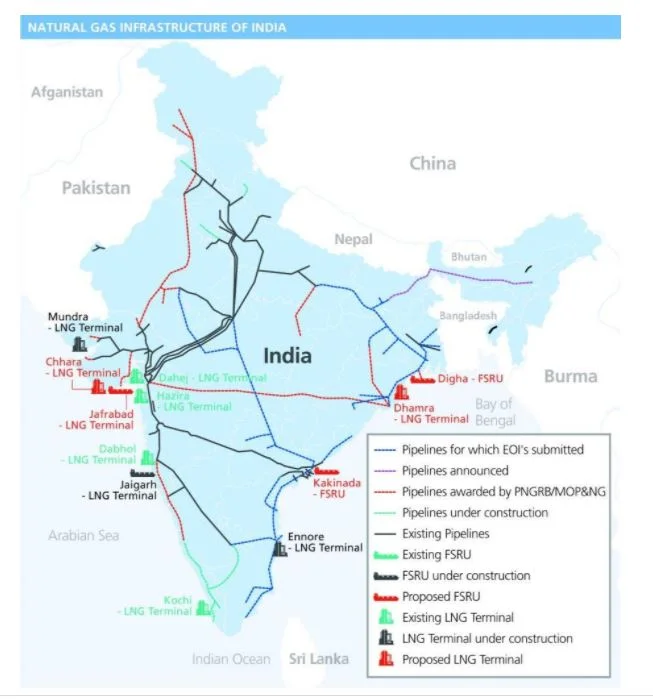UPSC Articles
ECONOMY/ GOVERNANCE
Topic:
- GS-3: Indian Economy and issues relating to planning, mobilization, of resources, growth, development and employment.
- GS-2: Government policies and interventions for development in various sectors and issues arising out of their design and implementation
One Nation, One Gas Grid
Context: In January 2021, Prime Minister inaugurated the 450-km natural gas pipeline between Kochi in Kerala to Mangaluru in Karnataka. The event marks an important milestone towards the creation of ‘One Nation One Gas Grid’
Key Features of the pipeline
- Constructed by: The 450-km pipeline has been built by GAIL (India) Ltd
- Transportation capacity: 12 million standard cubic metres per day
- Destination: It will carry natural gas from the liquefied natural gas (LNG) regassification terminal at Kochi to Mangaluru
- Geographical Challenges: Laying of the pipeline was an engineering challenge as the route of the pipeline necessitated it to cross water bodies at more than 100 locations. This was done through a special technique called horizontal directional drilling method.
- End Users: The pipeline will supply environment friendly and affordable fuel to households, transportation sector and to commercial and industrial units across the districts along the pipeline.
- Employment: The construction of this pipeline has generated 1.2 million man days of employment
One Nation, One Gas Grid
- The Indian Power system for planning and operational purposes is divided into five regional grids.
- One Nation, One Gas Grid refers to the integration of these regional grids thus establishing a National Grid for providing energy produced by natural gas to various stakeholders like the central government, the state governments, the public and the private sectors.

Image Source: ICIS
Benefits of One Nation One Grid
- Connecting the nation: With one nation and one gas grid, the energy produced from natural gas will be supplied to the whole country via a single source.
- Helps Accelerate Rapid Expansion: In the 27 years before 2014, only a 15,000 km natural gas pipeline was built. But currently work is underway on more than 16,000 km of gas pipeline nationwide which will be complete in the next 5-6 years
- Addresses regional imbalance: It will help in improving the regional imbalance of gas availability as currently the natural gas is only in limited pockets of the country.
- Gas Based Economy: The grid will be step towards gas-based economy by increasing the share of natural gas in India’s primary energy mix from 6.2 percent to 15 percent by 2030.
- Cleaner environment: In times when conventional Sources are depleting and mining is being extended to a greater depth and area, natural gas can prove to be a boon by preventing deforestation and desertification.
- Helps achieve Paris Climate Goal: India has made a commitment in COP21 Paris Convention in December 2015 that by 2030, it would reduce carbon emission by 33% of 2005 levels. Natural gas, as domestic kitchen fuel, as fuel for transport sector as well as a fuel for industries and commercial units, can play a significant role in reducing carbon emission.
Way Ahead
- Investing in natural gas should be more encouraged with focus on smaller firms
- Government should also indulge in educating people about the natural gas economy and its benefits.
- There is a need more LNG terminals for more upstream production of gas
- Various players like Union Government, Private Players, State Governments, R&D Organisations (ex: CSIR) and Foreign Players needs to collaborate effectively to make this programme a success.
Connecting the dots:














